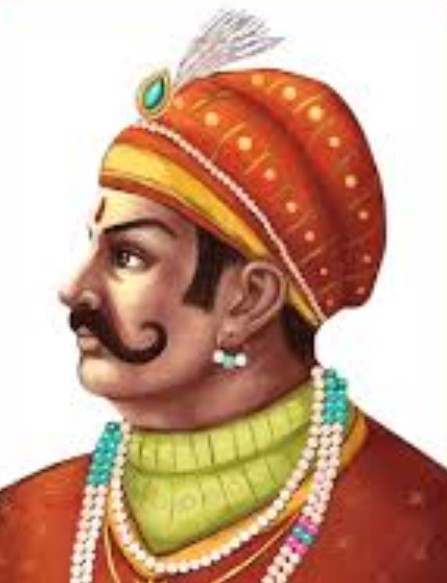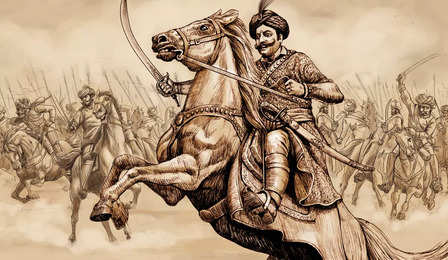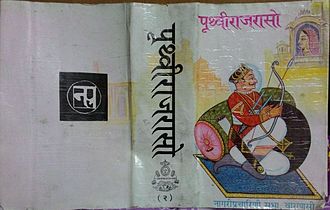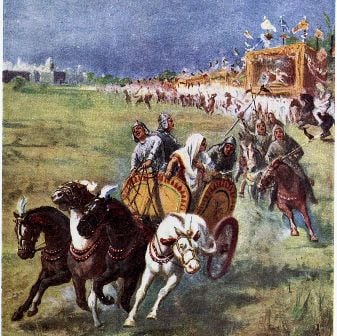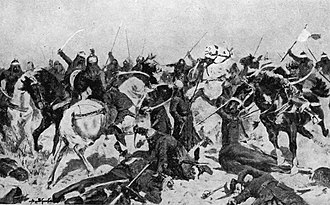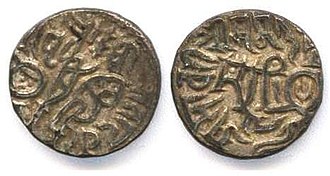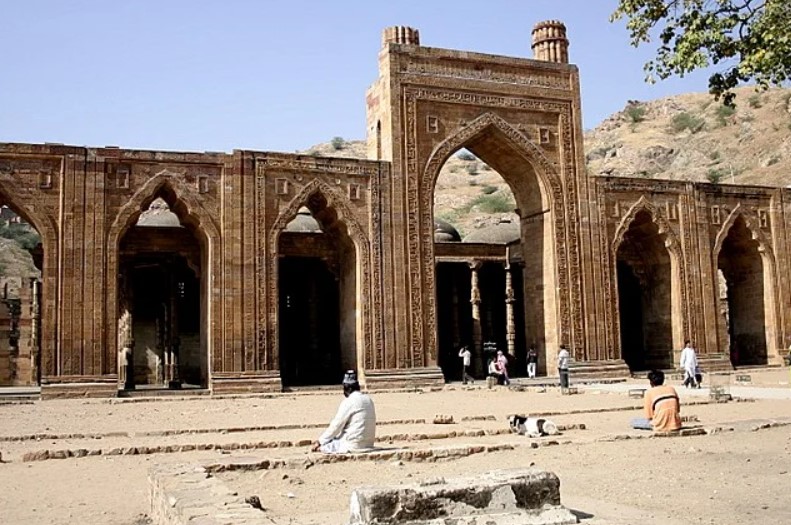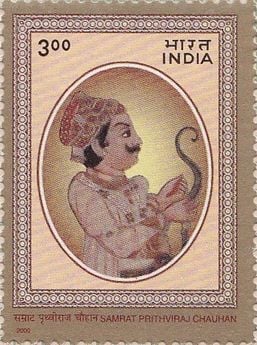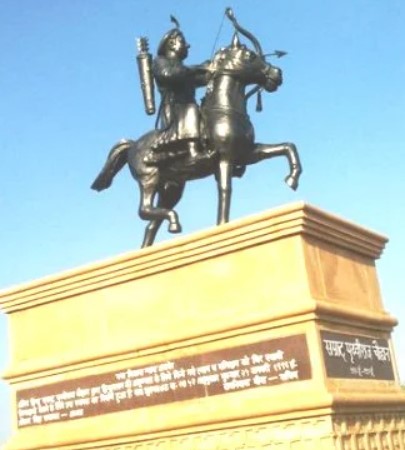Prithviraj Chauhan Age, Death, Wife, Children, Family, Biography & More
| Bio/Wiki | |
|---|---|
| Nickname(s) | Bharateshwar, Prithviraj III, Hindu Emperor, Sapadalaksheshwar, Rai Pithoragarh |
| Profession | Indian King, A 12th-century King from the Chauhan dynasty |
| Personal Life | |
| Date of Birth | 1 June 1163 (Saturday) (according to the Anglo calendar) [1]The Last Hindu Emperor |
| Birthplace | Patan, Gujarat, India |
| Date of Death | 11 March 1192 (according to the Anglo calendar) |
| Place of Death | Ajaymeru (Ajmer), Rajasthan |
| Age (at the time of death) | 28 Years |
| Death Cause | Died in captivity [2]History Of The Chahamanas |
| Zodiac sign | Gemini |
| Nationality | Indian |
| Hometown | Soron Shukarkshetra, Uttar Pradesh (currently Kasganj, Etah) Note: According to some scholars, he grew up in Rajapur, Banda (present-day Chitrakoot), Madhya Pradesh |
| Reign | c. 1177–1192 CE |
| Predecessor | Someshvara |
| Successor | Govindaraja IV |
| Dynasty | Chahamanas of Shakambhari |
| Relationships & More | |
| Marital Status (at the time of death) | Married |
| Family | |
| Wife/Spouse | Samyukta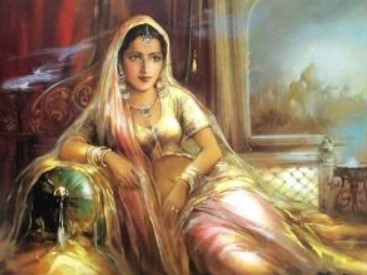 |
| Children | Son- Govind Chauhan |
| Parents | Father- Someshwara (King of Chahamana) Mother- Karpurdevi (Kalachuri Princess) |
| Siblings | Younger Brother- Hariraj Younger Sister- Pritha |
Some Lesser Known Facts About Prithviraj Chauhan
- Prithviraj Chauhan or Rai Pithora was an Indian king who was the ruler of Sapadalaksha and its capital Ajmer in Rajasthan. He belonged to the Chauhan (Chahamana) dynasty. In 1177 CE, Prithviraj was a minor when he inherited a kingdom, which stretched from Thanesar in the north to Jahazpur (Mewar) in the south. This kingdom was expanded by him by conquering the neighbouring kingdoms such as defeating the Chandelas through military actions against them. In 1191 AD, Prithviraj defeated the Ghurid army, which was led by Muhammad Ghori near Taraori by leading a group of several Rajput kings. However, Muhammad Ghori defeated the Rajput army on the same battlefield in 1192 CE with the help of some Turkish-mounted archers. Reportedly, many Islamic kings conquered India soon after his defeat at Tarain. A book titled Prithviraj Raso described briefly the defeat of Prithviraj and the rise of Islamic rulers in India.
- The information about Prithviraj Chauhan is mentioned in several medieval legendary chronicles such as medieval kavyas (epic poems) composed by Hindu and Jain poets, Prithviraja Vijaya, Hammira Mahakavya, and Prithviraj Raso. From his reign, Prithviraja Vijaya is the only surviving scholarly text, which was written by Prithviraj’s court poet Chand Bardai. The other books that mentioned the life of Prithviraj include Prabandha-Chintamani, Prabandha Kosha, and Prithviraja Prabandha. His war against the Chandelas was also described by Chandela’s poet Jaganika in his book the Alha-Khanda (or Alha Raso). A Sanskrit poem anthology titled Sharngadhara-paddhati, composed in 1363, also mentions Prithviraj Chauhan.
- Soon after the death of Prithviraja II, his father, Someshvara, was crowned the king of Chahamana, and they shifted from Gujarat to Ajmer. In 1177 CE, Someshvara died, and at the time of his father’s death, Prithiviraj was eleven years old. Prithviraj, along with his mother as the ruler, ascended the throne as a minor. A regency council and his mother managed the administration when he was too young to handle the system. During this time, Kadambavasa was the chief minister of the kingdom and was also known by the names Kaimasa, Kaimash, or Kaimbasa. The paternal uncle of Prithviraj’s mother, Bhuvanaikamalla, was also appointed as an important minister at that time. According to Prithviraja Vijaya, the military victories during the early years of Prithviraj’s reign were due to the support of Kadambavasa. According to the book Prithviraj Raso, Prithviraj killed Kadambavasa as Prithviraj captured him with his mistress Karnati and was involved in the conspiracy for repeated Muslim invasions. However, these claims were proved inaccurate by some historians as such incidents were not mentioned by Prithviraja Vijaya. According to historian Dasharatha Sharma, the actual control of the administration was assumed by Prithviraj in 1180 CE.
- The first military achievement of Prithviraj was when he defeated his cousin Nagarjuna, who was the son of his uncle Vigraharaja IV and struggling for the Chahamana throne. According to the two verses of Kharatara-Gachchha-Pattavali, Prithviraj then defeated the Bhadanakas in 1182 CE. Bhadanakas ruled the territories of Bhiwani, Rewari, and Alwar. Literary works such as Prithviraj Raso, Paramal Raso, and Alha-Raso mention that Prithviraj captured Chandela’s territory. The other texts like Sarangadhara Paddhati and Prabandha Chintamani described that Prithviraj attacked Paramardi. The text Kharatara-Gachchha-Pattavali states that Prithviraj was a Digvijay (conquest of all the regions) and embarked upon Jejakabhukti. This text also mentions that he was on a peace treaty with Bhima II, the Chaulukya (Solanki) king of Gujarat. According to Prithviraj Raso, Kanhadeva, the uncle of Prithviraj, killed seven sons of Bhima’s uncle Sarangadeva, and to take revenge for these deaths, Bhima killed the father of Prithviraj and captured Nagor. However, some historians claim that Bhima was a child at the time of Someshvara’s death and was not responsible for the killing. According to the text Partha-Parakrama-Vyayoga, Prithviraj attacked Mount Abu, which was then ruled by the Chandravati Paramara ruler Dharavarsha. However, the attack was a failure.
- In Prithviraj Raso, it is mentioned that the Gahadavala kingdom was headed by the king Jayachandra, and Prithviraj Chauhan eloped with Jayachandra’s daughter Samyogita, and the incident led to a rivalry between the two kings. According to the book,
Jaichand’s daughter Samyogita fell in love with Prithviraj after hearing about his heroic exploits, and declared that she would marry only him. Jaichand arranged a swayamvara (husband-selection) ceremony for his daughter, but did not invite Prithviraj. Nevertheless, Prithviraj marched to Kannauj with a hundred warriors and eloped with Samyogita. Two-thirds of his warriors sacrificed their life in fight against the Gahadavala army, allowing him to escape to Delhi with Samyogita.”
- Soon after his marriage to Samyogita, he started spending most of his time with his new wife, and this ignorance toward his state affairs led to his defeat against Muhammad of Ghor in 1192 CE. According to Prithviraj Raso, soon after this defeat, he defeated Nahar Rai of Mandovara and the Mughal chief Mudgala Rai; however, no historical evidence has been found to confirm the existence of these kings. Reportedly, the old Qila Rai Pithora fort in Delhi was constructed by Prithiviraj Chauhan.
- In the 12th century, several Muslim dynasties attacked and raided Prithviraj’s predecessors and captured the north-western areas of the Indian subcontinent.
- Muhammad of Ghor invaded the Chahamana territory during 1190–1191 CE and conquered Tabarhindah or Tabar-e-Hind (identified with Bathinda). Zia-ud-din, the Qazi of Tulak, who was supported by 1200 horsemen was the leader of this attack. Soon after Prithviraj received the information about this attack, he marched with 200,000 horses and 3,000 elephants. At Tarain, both the forces encountered, and the army of Prithviraj defeated the Ghurids. Soon, Muhammad of Ghor fled from the battlefield after he got injured in an attack. Later, Prithviraj surrounded the Ghurid military force at Tabarhindah.
- After defeating the Ghurids, Prithviraj neglected his state affairs and got involved in merry-making. During this period, to take revenge for the defeat, Muhammad of Ghor returned to Ghazna where he started gathering a well-equipped army of 120,000 Afghan, Tajik, and Turkic horsemen. Soon he started marching toward the Chahamana kingdom via Multan and Lahore with the help of Vijayaraja of Jammu. On the other side, no king helped Prithviraj as he had already fought battles against the neighbouring Hindu kings. Regardless, Prithviraj managed to assemble a huge army composed of over 100 Rajput rulers, who were well-equipped with several war elephants, cavalrymen, and foot soldiers. According to the 16th-century Muslim historian Firishta, Prithviraj’s army consisted of 300,000 horses and 3,000 elephants. Meanwhile, Prithviraj wrote a letter to Muhammad of Ghor and stated that he would not harm his army if he (Muhammad) chose to return to his country. On the other side, Muhammad replied that he needed time to consult his Ghazna-based brother Ghiyath al-Din. Muhammad of Ghor maintained peace on the battlefield until he received a reply from his brother; however, at the same time, he was planning an attack on the Chahamanas. According to Jawami ul-Hikayat,
Muhammad assigned a few men to keep the fires in his camp burning at night, while he marched off in another direction with the rest of his army. This gave the Chahamanas an impression that the Ghurid army was still encamped, observing the truce. After reaching several miles away, Muhammad formed four divisions, with 10,000 archers each. He kept the rest of his army in reserve. He ordered the four divisions to launch an attack on the Chahamana camp, and then pretend a retreat.”
- The Ghurid army attacked the Chahamana camp soon after sunset when Prithviraj was asleep. Muhammad’s strategy was to pretend that his army would flee the battlefield after a brief fight, and this would lead the Chahamana army to get exhausted soon. Meanwhile, Muhammad ordered his reserve force to attack the Chahamana. According to Taj-ul-Maasir, during this secret attack, Prithviraj lost 100,000 army men (including Govindaraja of Delhi). This defeat forced Prithviraj to escape the battlefield on a horse, but he was caught near the Sarasvati fort (possibly modern Sirsa) and Muhammad of Ghor captured Ajmer.
- A book titled Prabandha Chintamani written by the 14th-century Jain scholar Merutunga mentions that Prithviraj was easily captured when he went into a deep sleep after a day of religious fasting. [3]The Last Hindu Emperor In the same book, the 15th-century Jain scholar Nayachandra Suri mentioned the downfall of Prithiviraj Chauhan. He wrote,
After his initial defeat, the Ghurid king raised a fresh army with the support of a neighboring king, and marched to Delhi. Before the battle, he bribed Prithviraj’s master of horses and musicians with gold coins. The master of horses had trained Prithviraj’s horse to prance to drumbeats. The Ghurids attacked the Chahamana camp just before dawn, when Prithviraj was sleeping. Prithviraj tried to escape on his horse, but his musicians sounded the drums. The horse started prancing, and the invaders easily captured Prithviraj.”
- According to another Jain text, Prithviraja Prabandha, a minister of Prithviraj named Kaimbasa and his companion Pratapasimha had bad relations with their king Prithviraj. Once, Pratapasimha convinced Prithviraj that Kaimbasa was helping the Ghurids. This led Prithviraj to kill Kaimbasa one night; however, Prithviraj lost the target and ended up killing another man. Soon after the incident, Prithviraj’s musician Chand Baliddika criticised him for this killing. This led Prithviraj to dismiss Kaimbasa and Chand Baliddika from his ministry. It stated,
At the time of Ghurid invasion of Delhi, Prithviraj had been sleeping for ten days. When the Ghurids came close, his sister woke him up: Prithviraj tried to flee on a horse, but Kaimbasa helped the Ghurids capture him by telling them about a certain sound that caused his horse to prance.”
- According to medieval sources, soon after Prithviraj was captured, he was taken to Ajmer, the capital of Chahamana, where Muhammad wanted him to serve as a servant. However, after some time, Prithviraj Chauhan rebelled against him and was killed for betrayal. [4]Early Chauhān Dynasties Soon after the death of Prithviraj, the Chahamana prince Govindaraja was declared the king of Ajmer by Muhammad. According to Hammira Mahakavya, soon after he was captured on the battlefield, Prithviraj stopped eating food, and he died in prison. [5]History Of The Chahamanas The text Viruddha-Vidhi Vidhvansa, which was written by the Hindu writer Lakshmidhara, states that Prithviraj was killed on the battlefield. [6]History Of The Chahamanas
- Reportedly, several noted pandits (scholars) and poets were included in the ministry of Prithviraj Chauhan. Padmanabha was the leader of this ministry. The notable poets and scholars at his court included Jayanaka, a poet-historian who wrote Prithviraja Vijaya, Vidyapati Gauda, Vagisvara Janardana, Vishvarupa (a poet), and Prithvibhata, a royal bard.
- The Hindu Shahi kings who were the rulers of the Gandhara or Kabul region during the second half of the 9th century CE first issued the ‘horse-and-bullman’-style coins bearing the names of both Prithviraj and “Muhammad bin Sam.”
- According to historian R. B. Singh, the empire of Prithviraj Chauhan was expanded from the Sutlej river in the west to the Betwa river in the east. In the north, it was extended from the Himalayan foothills to the foot of Mount Abu in the south. In the present day, it includes Rajasthan, Uttrakhand, southern Punjab, northern Madhya Pradesh, Himachal Pradesh, and western Uttar Pradesh.
- Later, a number of memorials were built in Ajmer and Delhi in memory of Prithviraj Chauhan. A number of Indian films have been made on the life journey of Indian king Prithviraj Chauhan such as Prithviraj Chouhan (1924), Prithviraj (1931) by R. N. Vaidya, Prithviraj Sanyogita (1933), Prithviraj Samyogita (1946) by Najam Naqvi, Samrat Prithviraj Chauhan (1959) by Harsukh Jagneshwar Bhatt, Rani Samyuktha starring M.G. Ramachandran, Samrat Prithviraj (2022) by Chandraprakash Dwivedi. Notable television series such as Main Dilli Hoon (1998–1999) and Dharti Ka Veer Yodha Prithviraj Chauhan (2006–2009) were picturised on his life. In 2008, an Indian animated film titled Veer Yodha Prithviraj Chauhan was released on his life, which was directed by Rakesh Prasad.
- Prithviraj was considered one of the first historical figures who was covered in Amar Chitra Katha (No. 25). In the video game ‘Age of Empires II HD: The Forgotten,’ a five-page campaign is based on “Prithviraj.”
- According to some historical theories, soon after the birth of Prithviraj, his father called the renowned saints of his time to name his son. These saints named him Prithviraj after learning about his future. His name meant ‘the one who rules the entire earth.’ Prithviraj Chauhan was born and brought up in a very luxurious environment.
- Reportedly, he completed his formal education from “Saraswati Kanthabharan Vidyapeeth” (presently a ‘mosque’ named ‘Adhai Din Ka Jhopra’), which was established by Vigraharaja at Ajayameru (present-day Ajmer).
- Prithviraj was trained in martial arts and weaponry, which he learnt from his guru Shri Ram Ji. He was well-versed in six languages including Sanskrit, Prakrit, Magadhi, Paishachi, Shauraseni, and Apabhramsa. He was a great intellectual who had the knowledge of Mimamsa, Vedanta, Mathematics, Purana, History, Military Science, and Medicine.
- The Government of India issued a postal stamp on 31 December 2000 in memory of Prithviraj Chauhan.
- Later, in Ajmer, Rajasthan Samadhi Sthal of Emperor Prithviraj Chauhan was established by the state government in his honour.
References/Sources:

